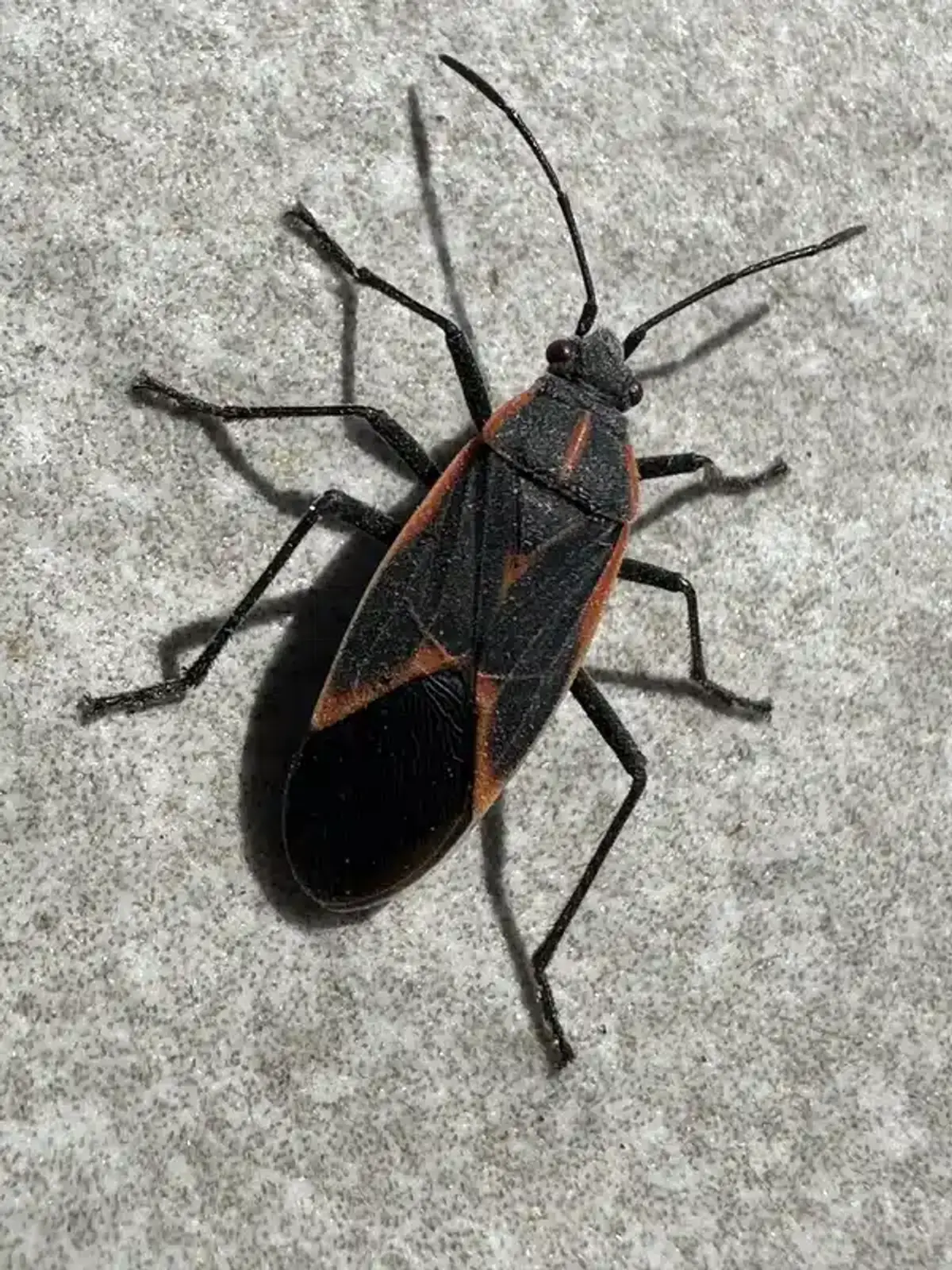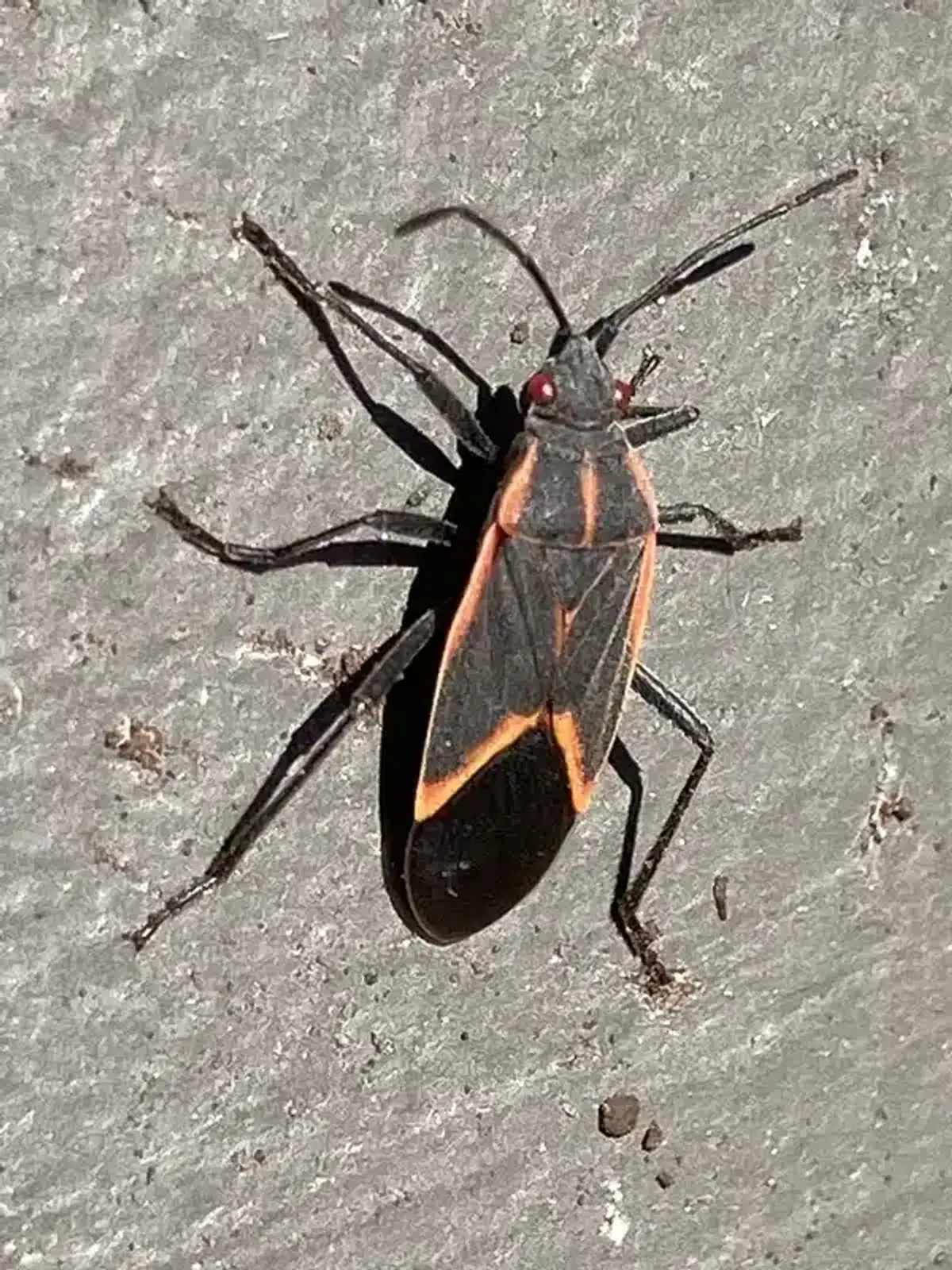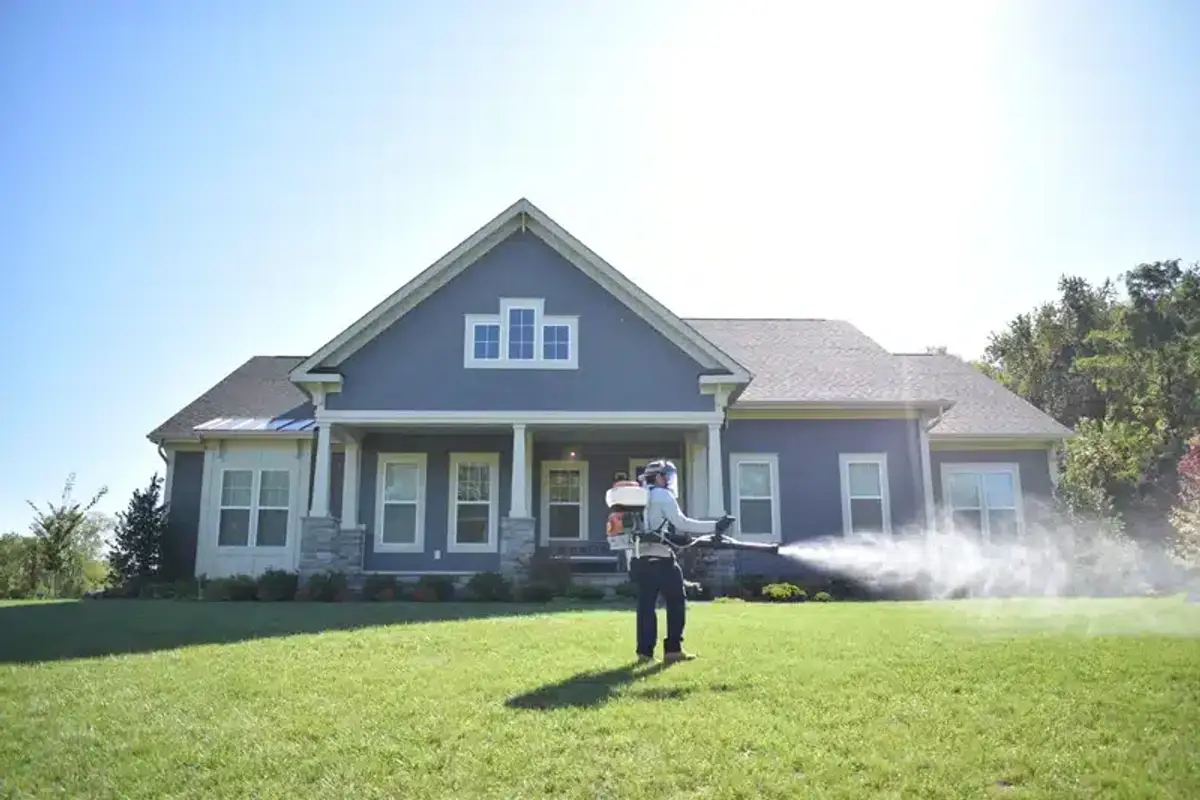As temperatures drop and leaves start changing, many homeowners notice an unwelcome increase in bug activity around their homes. Fall bugs are on the move, seeking warm places to spend the winter months. Understanding which pests become active during autumn and how to manage them can save you from months of indoor nuisance problems.
During my years working in pest control across the DC, Virginia, and Maryland area, I’ve seen firsthand how fall brings its own unique challenges. The combination of cooling temperatures and shorter days triggers insects to search for overwintering spots - and unfortunately, your home often fits the bill perfectly.

Why Fall Bugs Invade Your Home
The science behind fall bug invasions is actually pretty straightforward. When night temperatures consistently drop below 55°F and daylight hours shorten, many insects enter what’s called diapause - basically their version of hibernation. But before they settle in for winter, they need to find the right spot.
Your home’s south and west-facing walls warm up during sunny fall days, attracting insects by the hundreds. They congregate on these surfaces, then slip inside through surprisingly small gaps - some as narrow as one-eighth of an inch. This is why you might suddenly see swarms of bugs around your windows or find them scattered throughout your living spaces.
The timing varies slightly each year, but typically we see the heaviest invasion activity from mid-September through Halloween. Warmer autumns, which have become more common recently, can extend this window by up to two weeks.
Common Fall Pests and How to Identify Them
Brown Marmorated Stink Bugs
These shield-shaped insects are about half an inch long with brown marbled coloring and distinctive white bands on their antennae. They’re probably the most notorious fall bugs in our region, and for good reason - they release a foul odor when crushed or disturbed.
Stink bugs quit feeding on outdoor plants in early September and start looking for places to overwinter. They’re particularly drawn to attics and wall voids where they can remain undisturbed until spring.
Case Study: When Multiple Pests Share the Same Space
Alexandria Pest Discovery
During a routine termite inspection in Alexandria, we discovered what initially appeared to be a straightforward termite damage case. However, when we opened up the wall voids to assess the extent of damage, we made an unexpected discovery.
- Primary issue: Extensive termite damage in wall voids near the foundation
- Secondary discovery: Dozens of overwintering stink bugs in the same damaged areas
- Key insight: Compromised wall structures attract multiple pest types
- Treatment approach: Combined termite treatment with fall pest exclusion
This experience reinforced why comprehensive pest management considers multiple species - structural damage from one pest often creates opportunities for others.

Boxelder Bugs
These black insects with red wing markings congregate on sunny sides of buildings, especially near boxelder, maple, or ash trees. While they don’t harm people or property, they can leave dark stains on walls and fabrics.
Boxelder bugs become most active during warm October afternoons. I’ve helped many homeowners who were initially alarmed by the sheer numbers clustering on their home’s exterior, but the good news is they’re more of a nuisance than a real problem.
Multicolored Asian Lady Beetles
Often mistaken for beneficial ladybugs, these invasive beetles range from yellow to red and have a distinctive M-shaped black mark behind their heads. They release a yellowish fluid when threatened, which can stain surfaces and may cause allergic reactions in some people.
Asian lady beetles use aggregation pheromones, meaning when one finds a good overwintering spot, it releases chemicals that attract others. This is why you might find dozens or even hundreds in your attic space. For more detailed information about distinguishing these from beneficial species, check out our guide on ladybugs vs Asian lady beetles.
Cluster Flies
These flies are parasites of earthworms outdoors but seek upper-story areas of homes for overwintering. They’re sluggish compared to house flies and tend to cluster together - hence their name.

The challenge with cluster flies is that they become active on warm winter days, buzzing around windows as they try to get outside. This behavior continues throughout the cold months, making them particularly annoying.
| Stink Bugs | Boxelder Bugs | Lady Beetles | |
|---|---|---|---|
| Size | ½ inch | ½ inch | ¼ inch |
| Color Pattern | Brown marbled | Black with red marks | Yellow to red |
| Main Issue | Strong odor | Dark staining | Biting, staining |
| Peak Activity | September | October | Late October |
Other Fall Pests to Watch For
Overwintering Rodent Pests: Mice and Rats
Having worked in the DC area since 2015, I’ve noticed that rat and mouse activity really picks up as it gets cooler, especially in areas like Old Town Alexandria. Rodents can squeeze through openings as small as a quarter-inch - about the width of a pencil.
Our team developed a specific rodent protocol for this region focusing on lower-level baiting and targeted exclusion. From experience, I’ve learned that expensive attic treatments often recommended by competitors don’t address the root problem as effectively as sealing entry points and strategic placement of control measures. For more information on early detection, read our guide on signs of mice in walls.
Wasps and Yellow Jackets
Late summer and fall is when wasps become most aggressive as their food sources dwindle. Last fall, I helped remove a ground-level yellow jacket nest in a local HOA community. We had to carefully treat the underground nest in stages, then remove it entirely to keep residents protected from stings.
This type of removal is definitely something I encourage people to leave to licensed technicians, given the risks involved with aggressive wasps defending their colony.
Termites
While many people think of termites as a spring problem, fall is actually when we often discover hidden termite issues. As homeowners close up additions or perform maintenance, they sometimes uncover damage that’s been building for years.
From my experience helping more than a hundred customers with termite issues, I’ve learned that while proactive systems like Sentricon are typically reliable and less stressful, sometimes when problems are extensive, we need targeted liquid treatments with products like Premise or Termidor. Learn more about comprehensive approaches in our termite control guide.
Pest Control Prevention Strategies for Fall Bugs
Pest Control Exclusion: Your First Line of Defense
The most effective way to deal with fall bugs is to prevent them from getting inside in the first place. Research consistently shows that exclusion methods provide the most reliable long-term results.
What does the science say?
According to the U.S. EPA’s official guidance, sealing cracks and entry points is the most important step in stink bug prevention. EPA research indicates that structural exclusion is more effective than chemical treatments for preventing overwintering invasions.
Additionally, Virginia Tech Extension studies demonstrate that destroying spotted lanternfly egg masses reduces next year’s population by up to 90%, making fall prevention efforts critical for long-term pest management success.
Focus on these key areas:
- Caulk gaps around windows and doors with silicone or latex caulk
- Install door sweeps on exterior doors
- Repair damaged window screens with #20 mesh or finer
- Seal gaps where utilities enter your home
- Check and repair weatherstripping
I always recommend getting these tasks done by Labor Day. One weekend of preventive work can save you months of dealing with indoor pest problems.
Essential Fall Pest Prevention Steps
- Timing is Critical: Complete all sealing work by Labor Day weekend, before peak migration begins in mid-September
- Focus Areas: Prioritize south and west-facing walls where insects congregate on warm fall days
- Screen Maintenance: Use #20 mesh or finer to prevent entry through even small openings
- Professional Consultation: Consider perimeter treatments 10-14 days before insect migration begins
Timing Your Fall Pest Prevention Efforts
The key to successful fall pest prevention is timing. You want to complete exclusion work before insects start their migration, typically by mid-September. Once they’re already clustering on your home’s exterior, sealing entry points becomes less effective.

Pest Control Treatment Options for Fall Bug Control
Non-Chemical Bug Control Methods
When you find fall bugs inside your home, your first response should be mechanical removal. I always recommend using a shop vacuum with a soapy water bag rather than crushing insects directly. This method avoids the odor problem with stink bugs and prevents staining from lady beetles.
For spiders that become more noticeable as other insects move indoors, simple vacuuming of webs and spot removal works well. You can find more detailed spider management strategies in our spider control guide.
Professional Treatment Approaches
When prevention isn’t enough, targeted treatments can provide relief. Our approach focuses on creating a protective barrier around your home’s exterior before insects begin their fall migration.

We use EPA-approved products like bifenthrin or cypermethrin applied in a band around your home’s foundation. The timing is crucial - these treatments work best when applied 10-14 days before insects start congregating on structures.
For ongoing protection, we’ve developed a seasonal approach that targets the specific pests most active during each time of year. This method has proven much more effective than trying to address problems after they’ve already moved indoors.
Special Considerations for Regional Fall Pests
Spotted Lanternfly
This invasive species has become a major concern in our region. Adults are most active from August through November, and they lay egg masses that survive through winter. According to Virginia Tech Extension, destroying these egg masses is crucial for reducing next year’s population.
If you find the gray, putty-like egg masses on trees or structures around your property, scrape them off and destroy them. The Virginia Department of Agriculture maintains quarantine restrictions on moving firewood and nursery stock from affected areas.
Clover Mites
These tiny red mites become extremely noticeable in sunny areas during fall. I’ve worked with homeowners who were concerned about red stains on patios and walkways from accidentally crushing these pests.
Typically, we can handle clover mite outbreaks with one or two targeted treatments using non-repellent products. The key is applying treatment to the specific areas where they’re active rather than broad applications.
Ticks Remain Active
Many people assume tick season ends with summer, but according to the Virginia Department of Health, ticks stay active until sustained temperatures below 32°F. In the mid-Atlantic region, this means tick protection remains important well into December.
Our fall tick treatments focus on the transition areas between landscaping and natural terrain - what we call the ecotone. We typically perform granular applications in November combined with topical sprays to these specific zones.
When to Call for Pest Control Services
While many fall pest issues can be managed with good prevention and basic control methods, some situations require professional intervention. Consider calling a licensed technician when:
- You’re finding large numbers of insects inside despite sealing efforts
- You’re dealing with stinging insects like wasps or yellow jackets
- You discover signs of structural pests like termites or carpenter ants
- Prevention efforts haven’t reduced the problem after two weeks
Professional treatments often provide longer-lasting control because we can access areas homeowners can’t safely reach and use products not available to consumers. Additionally, we can identify contributing factors you might have missed, like moisture issues or hidden entry points.
If you’re dealing with persistent fall pest problems, don’t wait until the situation gets worse. Early intervention is almost always more effective and less expensive than trying to control established populations.
For immediate help with fall bugs or other pest concerns, call us at 703-683-2000 or email info@bettertermite.com. Our licensed technicians can provide a detailed assessment and create a treatment plan specific to your situation.
Frequently Asked Questions
Why do I suddenly have so many bugs in my house during fall?
+
Fall bugs are seeking warm places to overwinter when temperatures drop below 55°F consistently. Your home's heated interior and sun-warmed exterior walls make it an attractive shelter. Many insects enter through small gaps and cracks that are easy to overlook during warmer months.
Are stink bugs dangerous to my family or pets?
+
Stink bugs are not dangerous, but they can cause allergic reactions in some people and release a foul odor when disturbed. They don't bite or sting, and they're not known to carry diseases. The main issues are the smell and nuisance factor when they invade in large numbers.
What's the difference between beneficial ladybugs and problematic Asian lady beetles?
+
Asian lady beetles have an M-shaped black mark behind their head and tend to be more orange or yellow, while beneficial ladybugs are typically red with round black spots. Asian lady beetles also invade homes in large numbers and can bite, unlike true ladybugs. You can learn more in our detailed comparison guide.
When should I start preparing my home for fall bug invasions?
+
Begin prevention efforts by Labor Day weekend. This gives you time to seal entry points, repair screens, and apply any necessary treatments before insects start their migration in mid-September. Early prevention is much more effective than trying to control bugs after they've already moved in.
Can I use bug bombs or foggers for fall pest control?
+
Bug bombs are generally ineffective for fall bugs because these pests typically hide in wall voids and other protected areas where the fog can't reach. Vacuum removal and targeted treatments are much more effective. Professional perimeter treatments prevent bugs from entering in the first place.
Do fall bugs cause damage to my home?
+
Most fall invaders like stink bugs, boxelder bugs, and lady beetles don't cause structural damage. They're primarily nuisance pests. However, some fall pests like termites, carpenter ants, and rodents can cause significant damage and should be addressed immediately by professionals.
How long do overwintering bugs stay in my house?
+
Overwintering insects typically remain inactive until spring when warming temperatures trigger them to become active again. This means they could be in your walls or attic from October through April. Proper exclusion prevents this long-term occupation.
What should I do if I find a wasp or yellow jacket nest near my home in fall?
+
Contact a licensed pest control professional immediately. Fall wasps are more aggressive as their food sources decline, and attempting DIY removal can result in multiple stings. Professional technicians have the equipment and experience to remove nests while keeping you and your family protected.
With five years of hands-on experience in the pest control industry, George Schulz is a registered technician with the Virginia Pest Management Association and a proud third-generation professional in a family business that's been protecting homes for over 57 years. He manages and trains a team of service pros while also leading internal research efforts—recently spearheading a deep-dive review of thousands of documents on pest control materials to hand-pick the most kid and pet friendly, most effective solutions tailored specifically for homes in the DC metro area.
